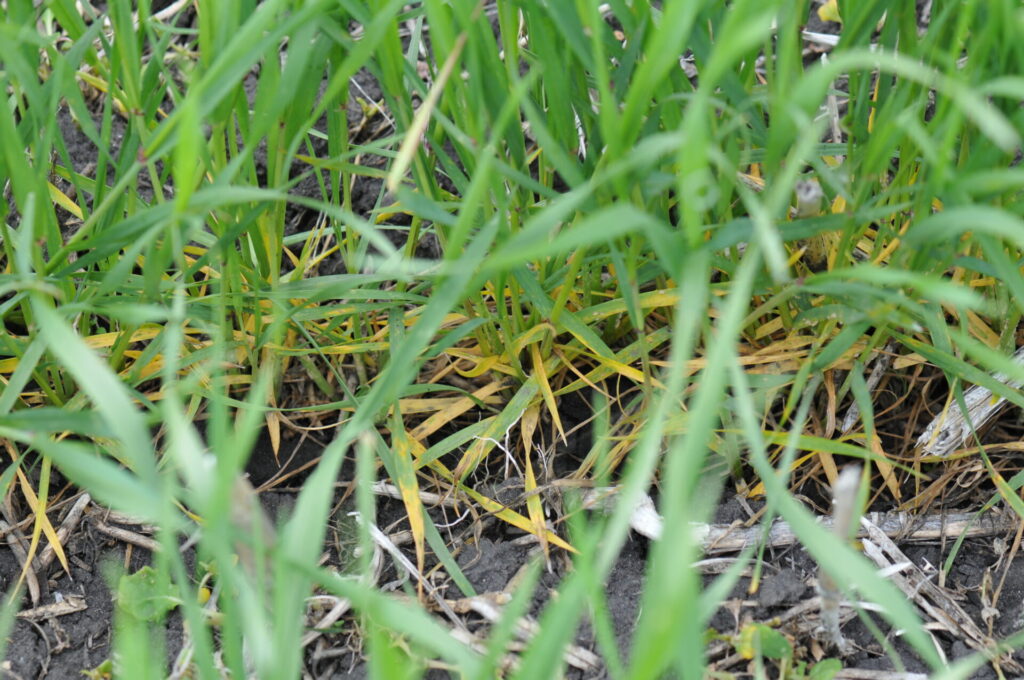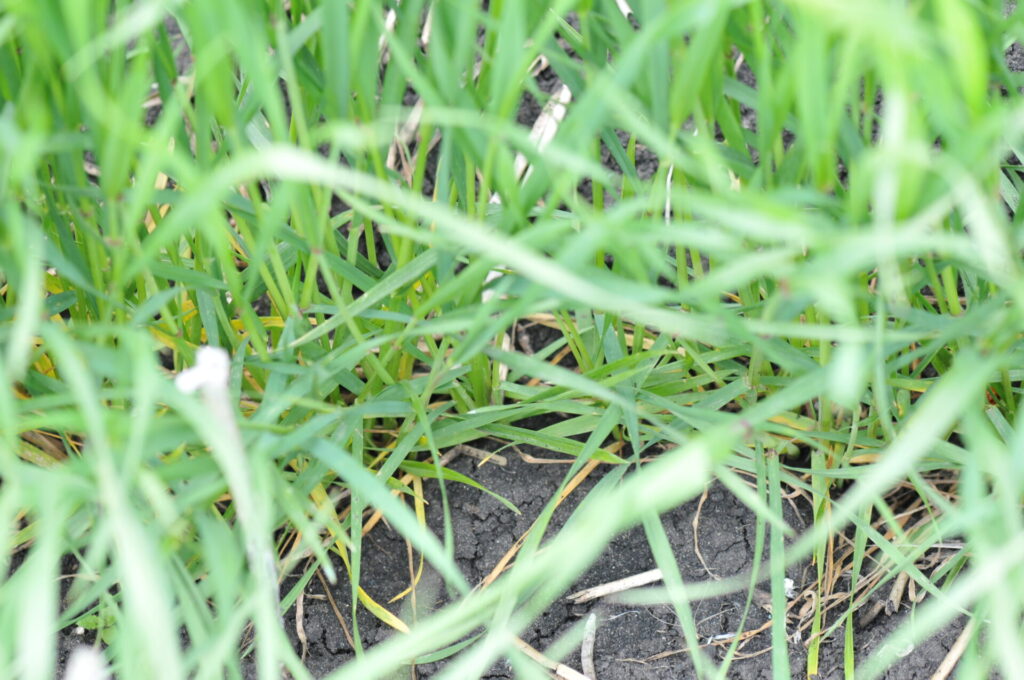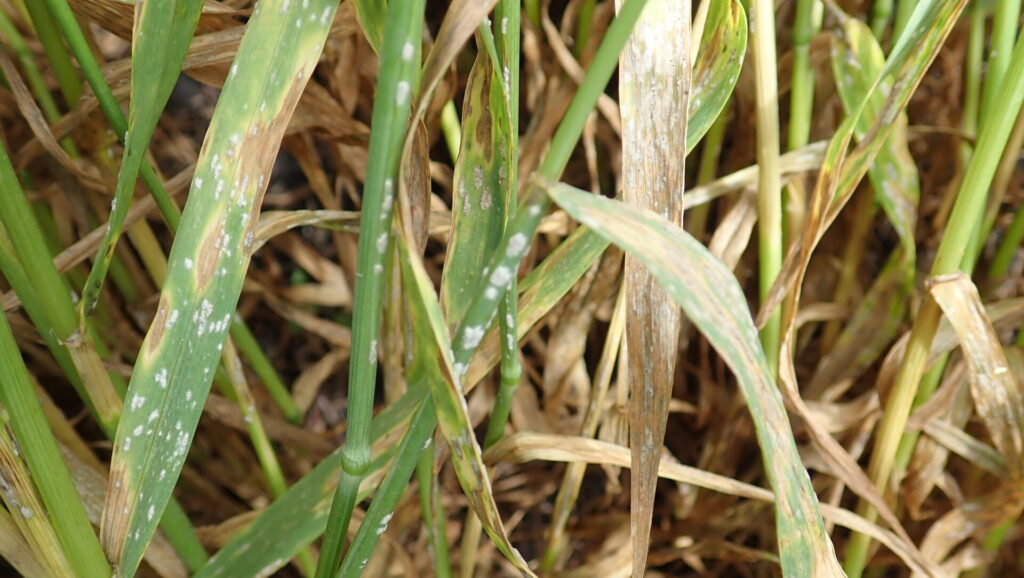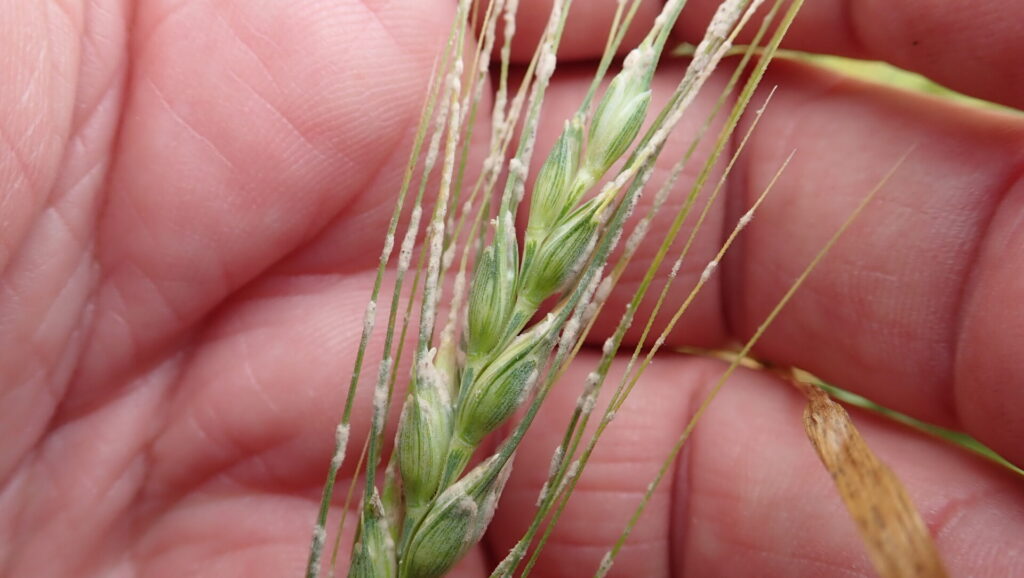On June 25, 2025, Carol Holt, Brayden Lubach, and Taryn Kanngiesser with Crop Doc Services Ltd. contacted the PCDMN to report multiple fields with powdery mildew in the central region of Alberta. They indicated symptoms were found up into the mid canopy of spring wheat fields of various varieties, with typical fungal growth and sporulation on leaves (Figure 1). Symptoms were found in at least five fields in the Lacombe area, while more were observed in the Ponoka region. Carol indicated that the soil wasn’t overly wet and that symptoms were most pronounced in protected areas of fields adjacent to tree lines.

Prairie wheat producers are familiar with the regular gang of the main wheat yield and quality robbers, including fusarium head blight, tan spot/red smudge, the septoria complex, and rusts such as stripe rust. However, one issue that may fly under the radar screen is powdery mildew.
Although powdery mildew is not common in spring wheat, it has been observed more routinely in winter wheat, but usually isn’t a huge issue (Figures 2 and 3). Unfortunately, there have been increasing reports of powdery mildew on spring wheat in some Prairie regions over the last several years (Figures 4-9).
Powdery mildew of wheat is caused by the biotrophic fungus Blumeria graminis f. sp. tritici. This pathogen typically causes yellowish spots on leaves with whitish to whitish/mousy grey masses of asexual spores and spore producing structures on the upper side of affected leaf tissue. As the plant and the infections mature this fungal growth may take on a darker grey colour, while the pathogen produces black sexual spore producing structures known as cleistothecia. These sexual structures help the pathogen to overwinter on infected plant residue. In areas with mild winter temperatures the pathogen may survive on living winter wheat plants as mycelium and asexual spores (conidia).
Infections in the spring in colder regions are generally the result of sexual spores being released by the overwintered cleistothecia with secondary spread resulting from the production of masses of conidia on living plants. There may be overwintering on winter wheat also, with the pathogen restarting development and sporulation as plants resume spring growth.
Cycling of the pathogen from the initiation of infections by spores to the development of symptoms and conidia can occur every 7-10 days. With temperatures under 25oC, especially from 15-22oC, and humid conditions the pathogen can develop rapidly. Temperatures above 25oC are not conducive to infection and further development. Free moisture is not required for infection and development, but can occur as low as 85% relative humidity (RH), with 100% being ideal. Dense, high yielding crops resulting from increased nitrogen fertilizer can also increase powdery mildew risk. Destruction of key upper leaf tissue results in yield losses ranging up to 40% in some regions.
Management of powdery mildew is mainly achieved via the use of resistant varieties or fungicide application. Unfortunately, given its past sporadic nature there have been limited breeding efforts on the Prairies for this disease in spring and winter wheat. Currently there is little information on levels of resistance in our commercial varieties.
Fungicides can be very effective, especially when upper canopy leaves are protected, which ensures improved grain filling and yield. The Crop Protection Network in the USA publishes an annual guide on the efficacy of fungicides for the control of various wheat diseases. Although from the USA, many of the actives and mixtures are commonly used in Canada. However, it is critical to consult local Prairie crop protection guides (AB Guide, SK Guide, MB Guide) and always follow label recommendations.









